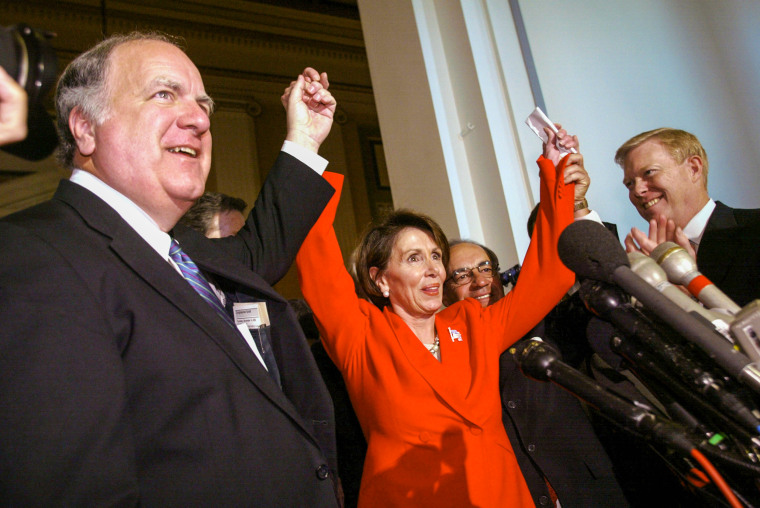WASHINGTON — In a final love letter to San Francisco, Rep. Nancy Pelosi, who made history as the nation’s first female speaker of the House and twice served in that top job, said Thursday in a video message she will not seek re-election in 2026.
“I will not be seeking re-election to Congress. With a grateful heart, I look forward to my final year of service as your proud representative,” Pelosi, 85, said in her video message to San Francisco voters, interlaced with sweeping imagery of the Golden Gate Bridge, Coit Tower and other landmarks, as well as photos that captured her storied political career.
The powerful California Democrat led her party in the House for two decades — from 2002 to 2022 — serving as a crucial ally for Presidents Barack Obama and Joe Biden, and orchestrating the opposition to Republican Presidents George W. Bush and Donald Trump.
NBC News reported this week that Democrats in California and on Capitol Hill were preparing for her retirement announcement.
While she had stepped aside as party leader three years ago, she had continued to serve in the House as a rank-and-file member and her Democratic colleagues granted Pelosi the title of “speaker emerita.”
Pelosi had said she would make a decision about her political future after the outcome of California’s Prop 50, the new congressional map drawn by state Democrats to combat GOP redistricting efforts in other states. Upon its passage in Tuesday’s election, Pelosi decided it was time to pass the torch.
Her decision will spark a fierce contest for her liberal, deep-blue San Francisco seat at a moment when Democrats across the country are embracing a new generation of leaders.
“As we go forward, my message to the city I love is this: San Francisco, know your power,” Pelosi said in her video announcement. “We have made history; we have made progress. We have always led the way, and now we must continue to do so by remaining full participants in our democracy, and fighting for the American ideals we hold dear.”
A former chair of the California Democratic Party, Pelosi, was first elected to the House in a special election in 1987 to replace the late Rep. Sala Burton. Since then, Pelosi has won every bid for re-election by wide margins and has been one of her party’s most prolific fundraisers and polarizing figures.

Even before her announcement, at least two Democrats had already launched bids to replace her: state Sen. Scott Weiner, 55, and wealthy former tech executive Saikat Chakrabarti, 39, a co-founder of the progressive outside group Justice Democrats that helped propel Rep. Alexandria Ocasio-Cortez, D-N.Y., to political stardom.
Pelosi’s decision is sure to entice others to throw their hats in the ring, given that a competitive congressional race has not been held in San Francisco for nearly four decades.
Pelosi was born into a well-connected political family in Baltimore in 1940. Her father, Thomas D’Alesandro Jr., was a Democratic congressman, and both he and her brother would go on to serve as mayors of Baltimore. Her father lived to see Pelosi, then 47 years old and a mother of five grown children, elected to Congress in June 1987; he died just two months later.

Having learned the family business from her father, Pelosi quickly rose through the ranks on Capitol Hill. She scored plum assignments on the House Appropriations and Intelligence committees, providing her with experience in federal funding and national security matters that would later serve her in leadership.
Her big opportunity came in 2001, when House Minority Whip David Bonior said he was stepping aside from the No. 2 position to run for governor of Michigan. In the hard-fought race to replace him, Pelosi defeated Rep. Steny Hoyer, D-Md. — the two had interned on Capitol Hill together in 1963 — in a 118-95 closed-door vote, making her the highest-ranking female member of Congress in history.

Another opportunity came just a year later. When Democrats failed to capture the majority in the 2002 midterms, Minority Leader Dick Gephardt, D-Mo., announced he was stepping down and to focus on a presidential run. Pelosi trounced then-Rep. Harold Ford Jr., D-Tenn., in a landslide 177-29 vote for minority leader, making her the top Democrat in the House.
After Democrats took back control of the chamber in the 2006 midterms, Pelosi was elected the first female House speaker in history, shattering one of the highest glass ceilings in all of U.S. politics.



